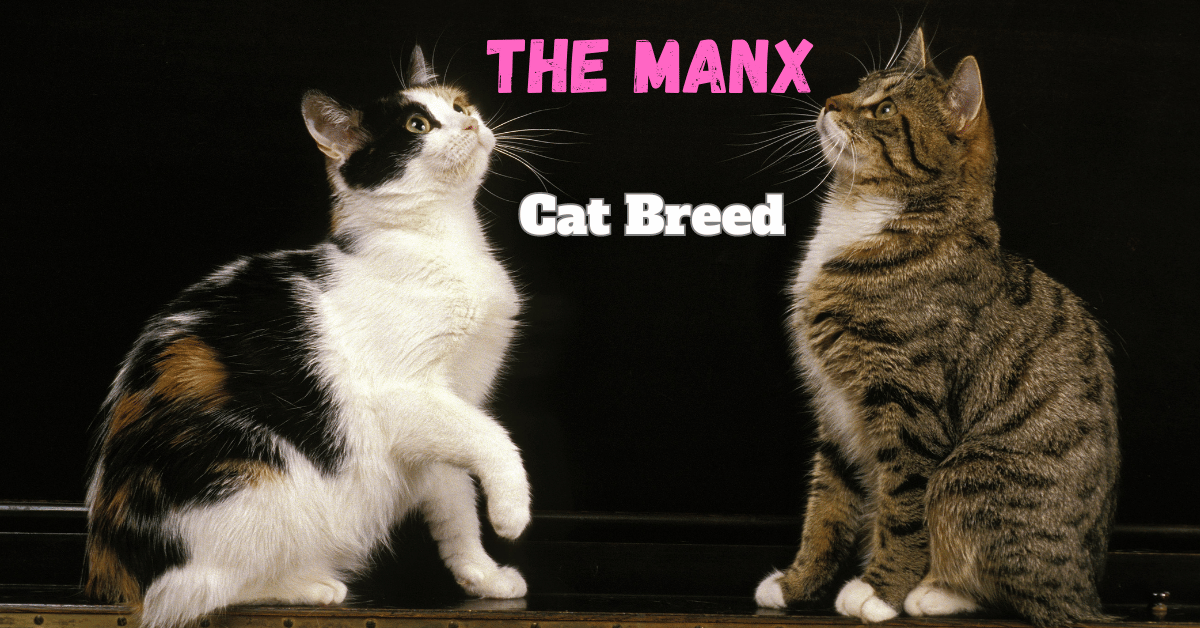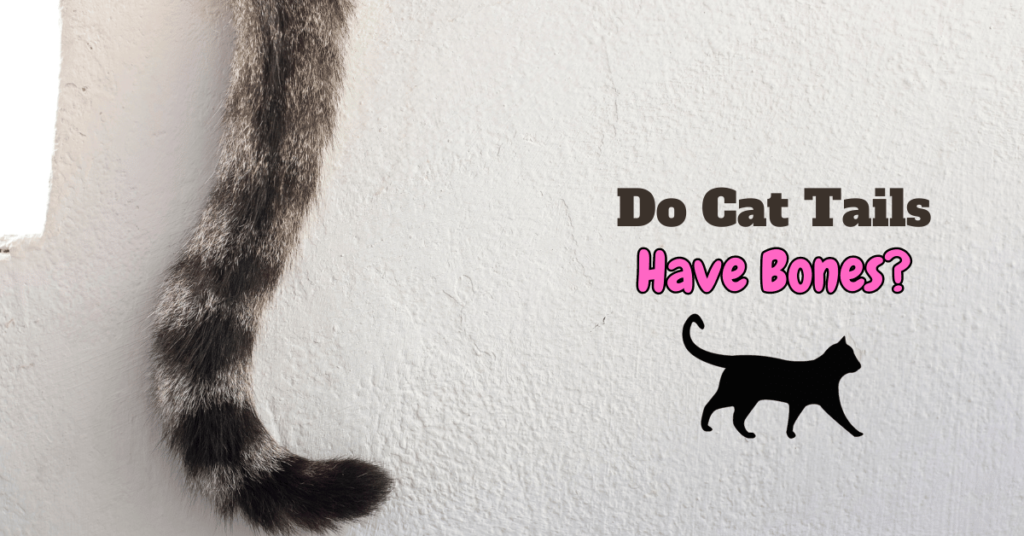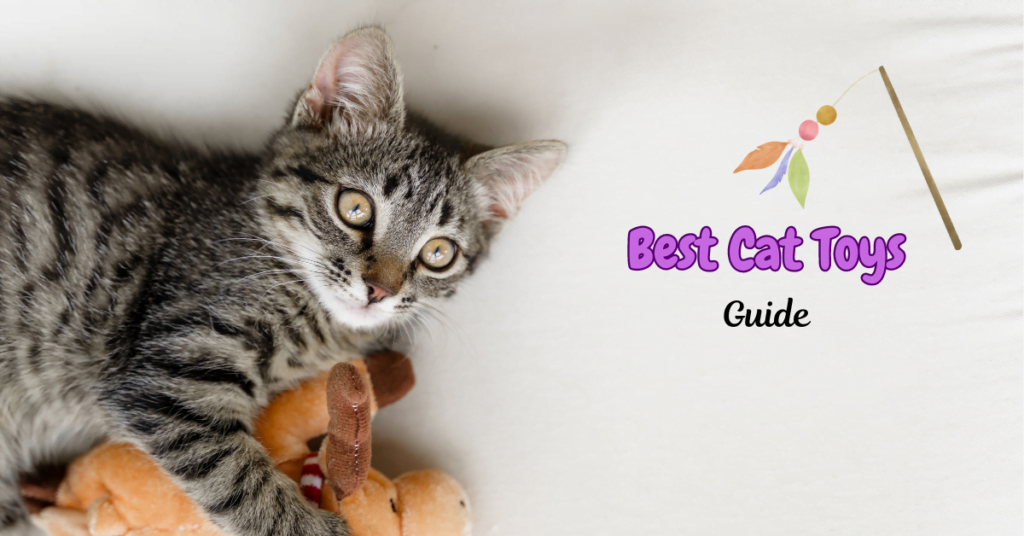This post contains affiliate links and I will be compensated if you make a purchase after clicking on my links.
Meet the Manx Cat Breed: Tailless and Terrific
The Manx cat, in earlier times often spelled as “Manks,” is most famous for its distinct lack of a tail—a trait that sets it apart in the feline world. But there’s far more to these cats than just their unusual appearance.
With their highly social and playful personalities, Manx cats are almost dog-like in how they interact with their human families. They exhibit an impressive loyalty and are surprisingly trainable, traits that provide families with years of affection and companionship.
Join us as we dive into the world of the Manx cat breed, exploring the unique characteristics that make these cats such cherished companions.
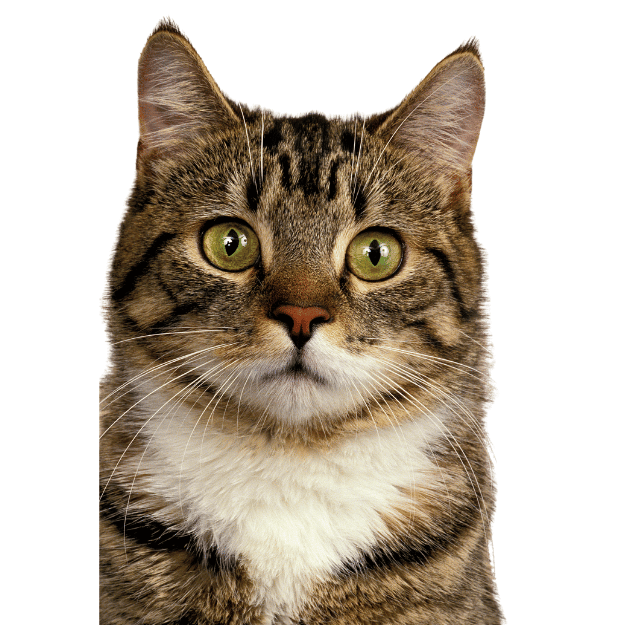
The Origins of the Manx Cat Breed
The intriguing tale of the Manx cat begins on the Isle of Man, where the breed’s signature taillessness first appeared as a natural mutation.
Despite the rich folklore suggesting that tailless domestic cats were initially brought to the island by sea, genetic studies show that the Manx is descended from mainland cats of obscure origin. Like all domestic cats, the Manx ultimately traces back to the African wildcat, Felis lybica, rather than Europe’s native wildcats, which have never inhabited the Isle of Man.
This dominant trait of taillessness stems from a spontaneous genetic mutation, known as the Manx taillessness gene. Due to the island’s limited genetic diversity, this trait became widespread, fostering the belief among locals that proximity to a Manx could influence other cat breeds to produce tailless kittens—a charming piece of cat folklore.
Interestingly, the Manx gene shares similarities with the tail suppression gene found in the American Bobtail breed, though these breeds are unrelated in development. The mutant gene, identified as gene M, is responsible for the Manx’s lack of a tail, although not all offspring inherit this gene—some kittens are born with full tails, classifying them outside the Manx breed.
Since the 1800s, Manx cats have been a fixture in cat shows, with the breed’s first standards published in 1903. The Cat Fanciers’ Association (CFA), a major U.S.-based cat registry, has recorded Manx cats in North America since the 1920s, although the breed wasn’t recognized by The International Cat Association (TICA) until 1979.
Fun Fact: One piece of Manx folklore is particularly evocative: it’s said that when Noah closed the ark’s door, he accidentally snipped off the tail of a Manx cat, leaving behind the tailless lineage we know today.
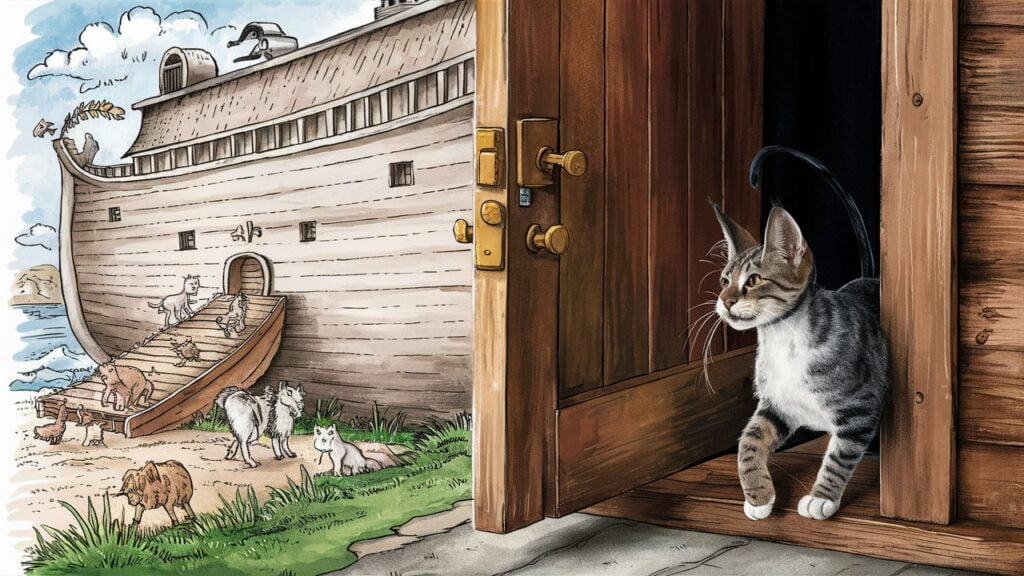
Characteristics of the Manx Cat Breed
The Manx cat, renowned for its unique taillessness, is a medium-sized breed with physical characteristics that are both intriguing and diverse. This section will delve into their physical attributes, coat variations, and tail classifications, providing a comprehensive view of this fascinating breed.
Physical Attributes
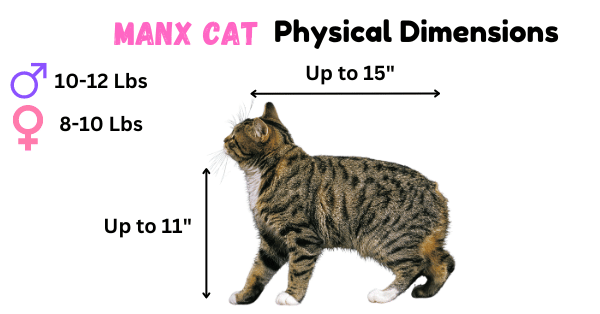
Manx cats typically weigh between ten to twelve pounds for males and eight to ten pounds for females, with some smaller or occasionally larger exceptions.
They measure about 14 to 15 inches in length. These cats are known for their broad chests, sloping shoulders, and flat sides. In show condition, a Manx cat is firmly muscular and lean, not bulky or fatty. This breed also features elongated hind legs and a rounded head, contributing to its unique silhouette.
Tail Classification
Manx cats are renowned for their taillessness, though many possess a small stub. The breed is characterized by a variety of tail types, each classified by the length at birth—a trait that remains unchanged throughout the cat’s life.
- Rumpy or Dimple Rumpy: Completely tailless, sometimes with a small tuft of hair where the tail would be.
- Riser or Rumpy Riser: A small bump of cartilage under the fur, more noticeable when the cat is happy and raises its hind.
- Stumpy: A partial tail consisting of vestigial, fused vertebrae, up to about 1 inch long.
- Stubby, Shorty, or Short-tailed: A short tail made of non-fused bones, up to half the length of an average cat tail.
- Longy, Tailed, or Taily: A half to full-length tail.
Standards for show and breeding often include only the Rumpy, Rumpy Risers, and Stumpy classifications, depending on the specific cat organization.
Coat Varieties and Colors
The Manx cat can have either a short or long coat. The more prevalent short-haired variety has a dense, soft underlayer topped by a coarser outer layer with guard hairs, lying close to the skin.
The long-haired variant of the Manx cat, often referred to as the Cymric, is distinguished by a silky double coat of medium length. This variant features distinctive breeches—resembling baggy, knee-length pants—along with a belly ruff and a neck ruff. Additional tufts of fur between the toes and in the ears further highlight the plush appearance of the Cymric.
Manx cats feature a thick, double-layered coat in a wide range of colors and patterns, including tabby, tortoiseshell, calico, and solid shades. Despite their diverse genetic background from extensive cross-breeding, certain colors like the pointed pattern seen in Siamese cats, as well as chocolate and lavender, are not accepted in show rings or for breeding.
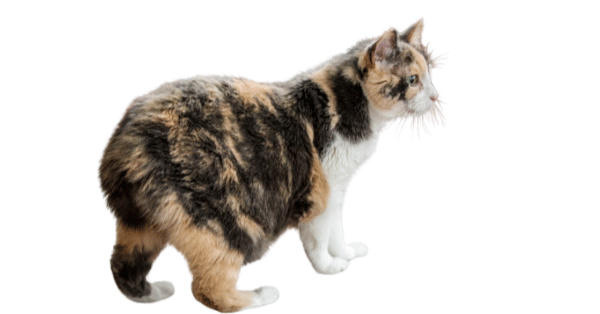
While all-white Manx cats are rare, the breed exhibits a spectrum of coat types. Notably, some variants, such as the color-point, blue-eyed, long-haired type, display Himalayan ancestry and have been celebrated on Isle of Man postage stamps since the 1980s.
Fact: The Cymric cat emerged from breeding a Manx with long-haired breeds such as the Persian, giving it its distinctive plush coat.
Eye Color Variation
Manx cats are known for their large, rounded, and prominent eyes, with the outer corners positioned higher than the inner ones. Typically, their eyes are shades of gold, but the absence of dominant genes from other breeds such as the Siamese allows for a variety of colors.
This can include copper, green, hazel, blue, or even odd-colored eyes, showcasing a diverse palette that reflects their unique genetic lineage.
The Personality of the Manx Cat Breed
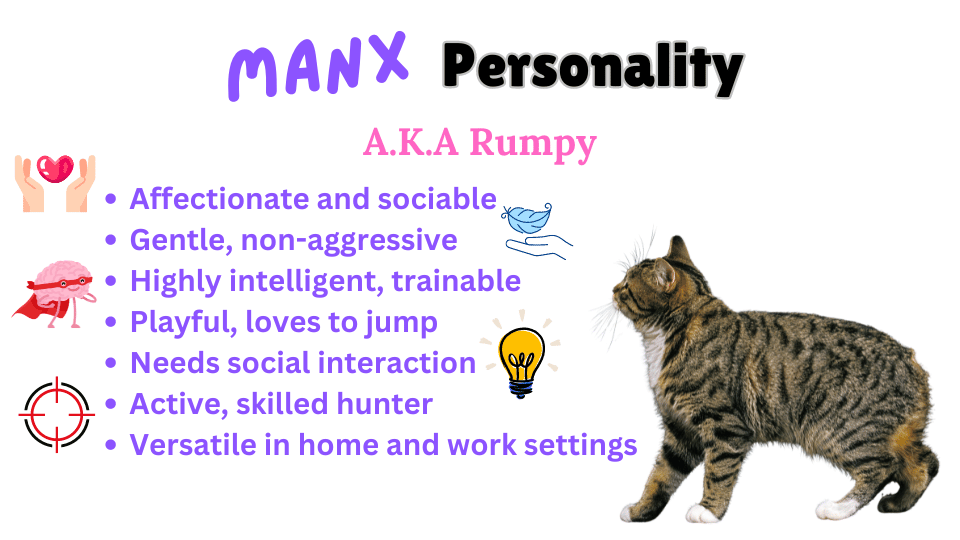
Manx cats, also affectionately known as Manks, Rumpy, or Stubbin, are treasured for their amiable and sociable personalities. Despite their prowess as hunters—capable of taking down sizable prey like adult rats—their hunting instincts do not translate into aggressiveness towards humans.
Instead, these cats are known for their docility and good temperament. They are highly people-oriented, often following their favorite person from room to room and enjoying a good curl-up on a lap for a nap.
Interaction and Intelligence
Manx cats are not just about affection; they are also remarkably intelligent. They readily learn tricks such as fetching, walking on a leash, and even more complex behaviors like opening doors or turning on faucets.
Their adaptability makes them excellent travel companions, particularly enjoying car rides. Moreover, their curiosity often extends to playing with water, adding a playful twist to their interactions.
Social and Active Lifestyle
These cats require significant social interaction and do not thrive when left alone for extended periods. Their need for engagement is coupled with a playful nature that manifests in exceptional jumping ability, which can sometimes lead to a bit of household mischief.
Historically, Manx cats have been valued not just in homes but in working environments as well. Farmers often seek them out for their rodent control capabilities, and they have been a preferred breed on ships for the same reasons. Their reputation as skilled hunters and their active, energetic character make them not only a joy to have around but also a practical addition to any home or farm.
Fact: Manx cats are alert, active, and powerful, combining affection, utility, and sociability, making them cherished companions in both homes and working roles.
Comprehensive Care for the Manx Cat Breed
Caring for a Manx cat involves attention to their specific health, dietary, and exercise needs, ensuring they lead a healthy and fulfilling life. This section breaks down the crucial aspects of their care into health issues, diet and nutrition, and exercise requirements.
Health Issues and Considerations
Manx cats typically live between 10 to 16 years, yet their distinctive taillessness comes with inherent genetic risks. The dominant and highly penetrant Manx taillessness gene can cause serious health issues if two tailless Manx cats are bred together, including potentially fatal genetic disorders. Moreover, kittens that inherit two copies of this gene frequently do not survive gestation.
Manx Syndrome
“Manx syndrome,” also known colloquially as “Manxness,” is a severe condition resulting from the taillessness gene, which excessively shortens the spine. This genetic issue causes spina bifida and significant problems with the bowels, bladder, and digestion.
Symptoms often include incontinence, partial paralysis, and an unusual gait. Treatment options are quite limited; while some spinal surgeries may provide relief, there is no definitive cure for spina bifida.
The condition can be challenging to diagnose, with affected cats sometimes exhibiting very small bladders. Manx syndrome can lead to sudden death, with affected cats often living only 3-4 years. The oldest recorded case was a female cat named Pharrah, who lived to be 7 years old.
Fact: According to one study, approximately 30% of Manx cats may develop this condition, particularly those with the most extreme tailless phenotype, known as “rumpies.”
Megacolon
A significant concern for tailless Manx cats is the development of megacolon, a serious condition characterized by chronic constipation that can become life-threatening if not properly managed.
This condition arises when the smooth muscle, which normally contracts to move stools toward the rectum, fails to function effectively—often due to the genetic absence of a tail.
Corneal Dystrophy
Manx cats are also prone to corneal dystrophy, which typically begins to affect them at around four months of age. This condition can impair vision and requires veterinary attention to manage symptoms and maintain the cat’s quality of life.
Fact: Some Manx cats with partial tails develop arthritis, causing severe pain, and occasionally, Manx kittens are born with kinked tails due to incomplete development. To prevent complications, tails ranging from stumpy to long are sometimes docked at birth.
Diet and Nutrition
The Manx cat’s dietary needs are somewhat unique due to their delayed maturity; they do not reach full growth until about five years old. For the first year, they should be fed kitten food, transitioning afterward to a complete and balanced diet suitable for all life stages.
Key nutritional components for a Manx cat include proteins as the primary ingredient for overall health, omega-3 fatty acids for a healthy coat, amino acids for vision and heart health, and fiber for proper digestion and weight control.
Manx cats can enjoy both wet and dry foods but have a preference for warm meals rather than chilled. A diet rich in these nutrients ensures that Manx cats remain healthy and vibrant.
Exercise Requirements
Despite their tail variations, Manx cats and other tail-suppressed breeds do not suffer from balance issues, as balance is primarily controlled by the inner ear. Unlike rats, where the tail is a significant part of body mass affecting balance, tails in large-bodied mammals like cats and dogs are not essential for this function.
Manx cats require moderate exercise, benefiting from 30 to 60 minutes of designated playtime daily to cater to their playful nature. They enjoy activities like running, climbing, and jumping. Engaging them with small plush toys that mimic trapping and retrieving will keep them happy and physically active.
Grooming Requirements for the Manx Cat Breed
Caring for a Manx cat involves specific grooming practices to manage their unique double coat and overall hygiene. Here’s a comprehensive breakdown of the grooming requirements.

- Brushing: Crucial for controlling shedding and maintaining a healthy coat due to their double-layer fur. Longhaired Manx require daily brushing, whereas shorthaired Manx benefit from weekly sessions. Expect increased shedding, especially during the spring and fall, as is common with double-coated breeds.
- Bathing: Helps reduce the buildup of oils and dirt, particularly useful during shedding seasons. Bath your Manx every few months or as needed.
- Nail Trimming: Prevents overgrowth, splitting, and potential furniture damage. Should be done every 2-3 weeks.
- Teeth Cleaning: Maintains oral health by preventing gum disease and tooth decay. Brush several times a week, ideally daily.
- Ear Cleaning: Helps prevent infections by removing wax and debris. Ideally, check and clean the ears weekly as necessary.
Summing Up: Key Considerations for Manx Cat Breed Owners
Owning a Manx cat comes with specific responsibilities due to their unique genetic makeup and the associated health risks. Their taillessness can lead to conditions such as Manx syndrome, emphasizing the need for attentive and proactive healthcare.
Regular veterinary check-ups, appropriate exercise, and a tailored diet are crucial to mitigating these risks. By understanding and addressing the special health concerns of the Manx cat breed, you ensure a fulfilling and healthy life for your cherished pet.
Meet Sean, a fintech whiz with a penchant for pet purrs and blockchain buzz. After a decade of fintech feats, Sean’s tech talents leaped from ledger lines to litter lines, driven by a passion for pets and a vision for a more connected pet care community. With three critter companions as co-pilots, Sean launched this blog to share a treasury of pet-friendly tech tips and tales.

